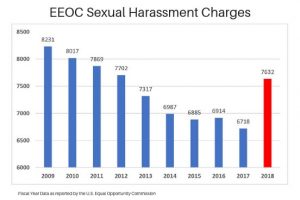The U.S. Equal Employment Opportunity Commission (EEOC) has postponed the filing period for 2018 EEO-1 surveys. Employers usually must file these annual reports by March 31st. However, this year’s deadline will be May 31, 2019, as a result of the recent federal government shutdown.
Who Must File a 2018 EEO-1?
Private employers with 100+ employees must annually report employee data on race, ethnicity, and gender by occupational category.
Many federal contractors with less than 100 but more than 50 employees also must file these EEO-1 reports.
EEO-1 Data
The EEO-1 survey requires covered employers to identify the number of employees they have in various job categories based on several demographic groups.
The EEO-1 job categories are:
- Executive/Senior Level Officials and Managers
- First/Mid-Level Officials and Managers
- Professionals
- Technicians
- Sales Workers
- Administrative Support Workers
- Craft Workers
- Operatives
- Laborers and Helpers
- Service Workers
Within these job categories, employers must provide the number of employees based on sex and race/ethnicity from among these options:
- Hispanic or Latino
- White
- Black or African American
- Native Hawaiian or Pacific Islander
- Asian
- Native American or Alaska Native
- Two or more races
Employers must attempt to allow employees to self-identify among these groups. If an employee declines to do so, then the employer can rely on existing employment records or observer (e.g., manager) identification to complete the survey.
The EEO-1 is a snapshot report as of a single pay period in October, November, or December. Thus, it does not necessarily reflect all individuals who worked for the company during the survey year.
Why the Delay?
The EEOC has not finalized details and instructions for the 2018 EEO-1 reports. It expects to open filing for employers in early March 2019.
For updates on the 2018 EEO-1, visit the EEOC’s website.
Not Unprecedented
EEO-1 filing was also delayed last year.
Toward the end of the Obama administration, the EEOC planned to modify the EEO-1 report to include wage and hours data beginning with reports of 2017 data. The Trump administration, however, rejected that expansion.
Though it’s not clear whether that situation alone prompted the move, the EEOC postponed the filing deadline to June 1, 2018, for 2017 data. So, barring a further postponement this year, employers have one fewer day (albeit a Saturday) to submit the 2018 EEO-1 surveys.
What Should You Do Now?
If you’re not already sure, check to determine whether your company must file a 2018 EEO-1. If you will be filing for the first time, make sure you know what data to use. You might also need to obtain employee self-identification of ethnicity. Then check back with the EEOC in early March to confirm the procedure for filing this year.
Want to receive updates about employment law topics of interest to employers and notification of our free webinars?
Click here to sign up for the Horton Law email newsletter.




You must be logged in to post a comment.